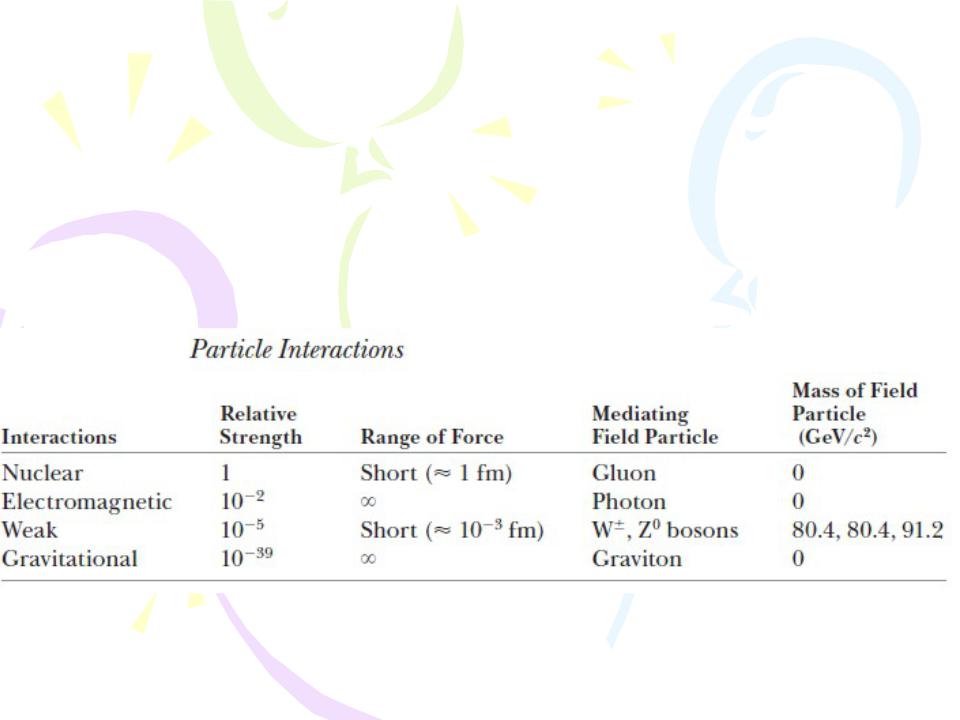
- •Course of lectures «Contemporary Physics: Part2»
- •The Fundamental Forces in Nature
- •Positrons and Other Antiparticles
- •Positrons and Other Antiparticles
- •Mesons and the Beginning of Particle Physics
- •Mesons and the Beginning of Particle Physics
- •Classification of Particles
- •Conservation Laws
- •Conservation Laws
- •Strange Particles and Strangeness
- •Finding Patterns in the Particles
- •Finding Patterns in the Particles
- •Finding Patterns in the Particles
- •Quarks
- •Quarks
- •Multicolored Quarks
- •Multicolored Quarks
- •The Standard Model
- •The Cosmic Connection

Course of lectures «Contemporary Physics: Part2»
Lecture №15
Particle Physics and Cosmology. The Fundamental Forces in Nature. Positrons and Other Antiparticles. Mesons and the Beginning of Particle Physics. Classification of Particles. Conservation Laws. Strange Particles and Strangeness. Finding Patterns in the Particles. Quarks. Multicolored Quarks. The Standard Model. The Cosmic Connection. Problems and Perspectives.

The Fundamental Forces in Nature
All natural phenomena can be described by four fundamental forces acting between particles. In order of decreasing strength, they are the nuclear force, the electromagnetic force, the weak force, and the gravitational force. 

Positrons and Other Antiparticles
Paul Dirac developed a relativistic quantum-mechanical description of the electron that successfully explained the origin of the electron’s spin and its magnetic moment.
Dirac circumvented this difficulty by postulating that all negative energy states are filled. The electrons occupying these negative energy states are collectively called the Dirac sea.
The hole can react to external forces and is observable. The hole reacts in a way similar to that of the electron except that it has a positive charge: it is the antiparticle to the electron.

Positrons and Other Antiparticles
(a) Bubble-chamber tracks of electron–positron pairs produced by 300-MeV gamma rays striking a lead sheet from the left. (b) The pertinent pair-production events. The positrons deflect upward and the electrons downward in an applied magnetic field.

Mesons and the Beginning of Particle Physics
Pions and muons are very unstable particles. The muon, which has a mean lifetime of 2.2 ms, then decays to an electron, a neutrino, and an antineutrino:
Feynman diagram representing a photon mediating the electromagnetic force between two electrons.

Mesons and the Beginning of Particle Physics
(a) Feynman diagram representing a proton and a neutron interacting via the nuclear force with a neutral pion mediating the force. (This model is not the current model for nucleon interaction.) (b) Feynman diagram for an electron and a neutrino interacting via the weak force, with a Z0 boson mediating the force. 

Classification of Particles
All particles other than field particles can be classified into two broad categories, hadrons and leptons. The criterion for separating these particles into categories is whether or not they interact via the strong force. The nuclear force between nucleons in a nucleus is a particular manifestation of the strong force, but we will use the term strong force to refer to any interaction between particles made up of quarks.


 Conservation Laws
Conservation Laws
Baryon Number
Experimental results show that whenever a baryon is created in a decay or nuclear reaction, an antibaryon is also created. This scheme can be quantified by assigning every particle a quantum number, the baryon number, as follows: B =+1 for all baryons, B=-1 for all antibaryons, and B=0 for all other particles. The law of conservation of baryon number states that
whenever a nuclear reaction or decay occurs, the sum of the baryon numbers before the process must equal the sum of the baryon numbers after the process.

 Conservation Laws
Conservation Laws
Lepton Number
There are three conservation laws involving lepton numbers, one for each variety of lepton. The law of conservation of electron lepton number states that 
whenever a nuclear reaction or decay occurs, the sum of the electron lepton numbers before the process must equal the sum of the electron lepton numbers after the process.
